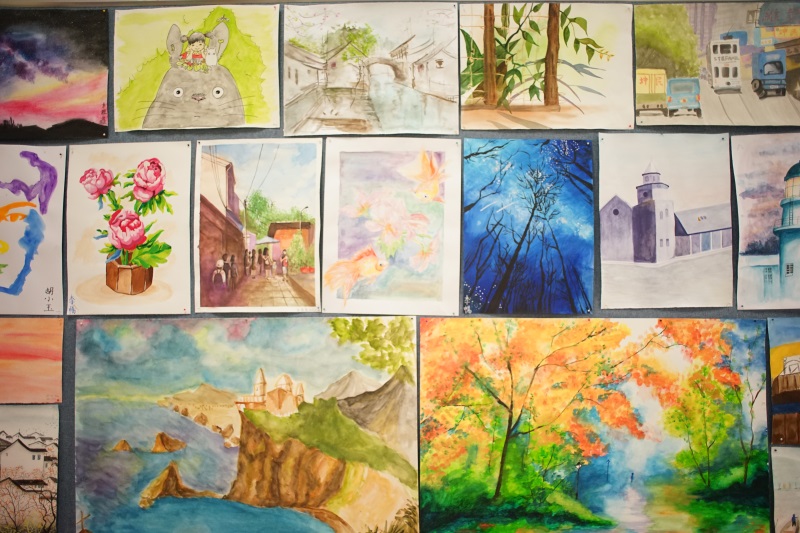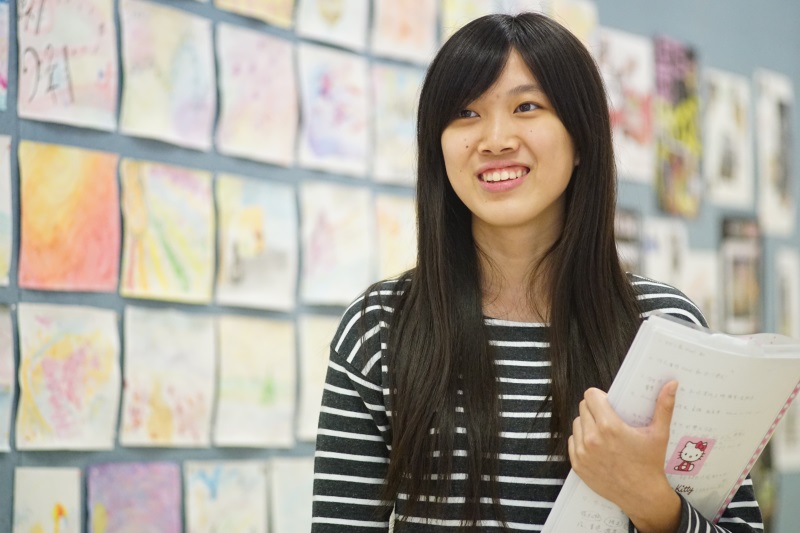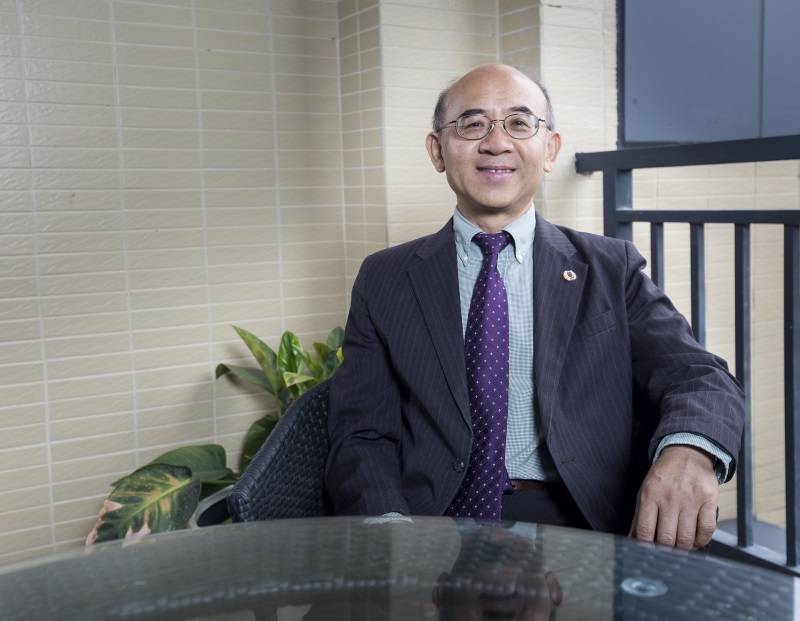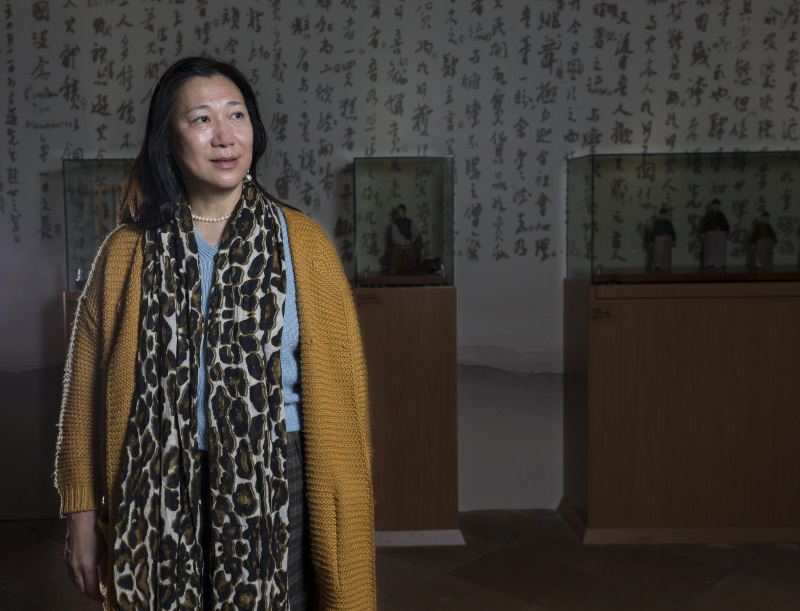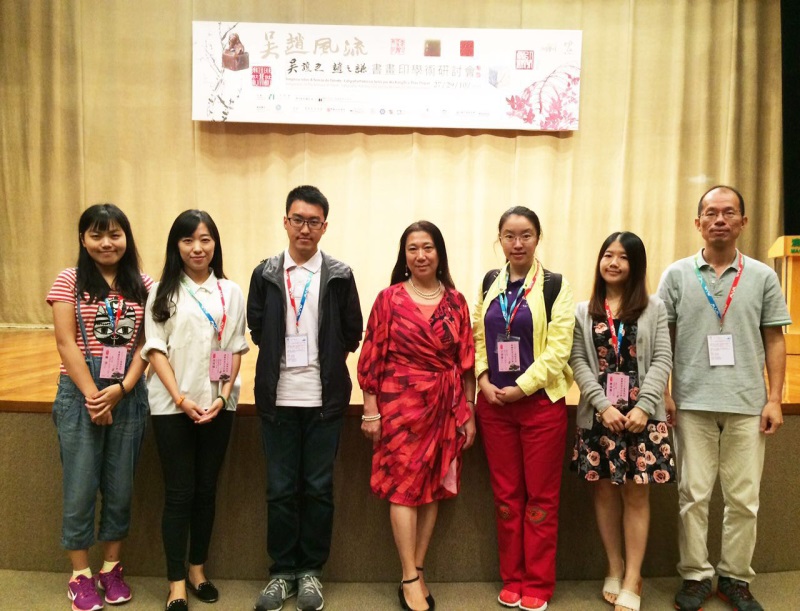Source: umagazine
Jessica Hoffmann Davis, founder of the Arts in Education Program at Harvard University’s Graduate School of Education, once said something to the effect that arts education provides children with a new way of understanding and engaging with the world. In recent years, to meet the increasing demand for creative individuals, the University of Macau (UM) has introduced arts education into its undergraduate curriculum and residential colleges.
Anyone Can Be an Artist
The softly toned watercolour painting of dancing musical notes, hung on the corridor wall of the Faculty of Education building, never fails to touch Ao I Leng, a second-year UM student majoring in primary education, for she feels the painting speaks to her— about the painter’s understanding and love of life.
Ao used to believe that not everyone is born with an artistic bent, but she changed her mind after taking a course in visual arts at UM. ‘Now I believe that everyone has a dormant artist inside just waiting to blossom,’ she says. ‘Art requires no luxury trimmings, no royal taste, and no exceptional skills. It is about following your artistic whims and producing something that speaks to people.’ In her opinion, art is a discipline with its own theories and history and it offers a world where one can make continuous progress. ‘As with any other discipline, it does not matter how talented you are to begin with. As long as you pour your heart and soul into it, there will come a day when you will reap the fruit of your work,’ she says.
Arts Education Closely Linked to Early Childhood Education
Studies have shown that early exposure to the arts helps young children develop observational, creative, and communication skills. For this reason, UM encourages students who major in pre-primary education or primary education to learn more about arts education. Hoping to share her experience in the arts, Ao, who is herself a primary education major, has opened arts-related classes both on and off the campus, including the clay art workshop she offers to UM students through the Campus Training Programme, and painting and textile art classes she teaches off campus. ‘Teaching small classes is not only great fun, but also allows me to practice the theories and knowledge I learned from textbooks,’ she says.
Ao believes that no one should be excluded from arts education. She once had a student with a speech impairment, who was routinely quiet and almost never communicated with his classmates. Believing that arts education could help improve his condition, She devoted more time to this student, sometimes teaching him to draw by holding his hand. One day, the student surprised everyone when he suddenly called out Ao’s name in class. ‘Words cannot even begin to describe the happiness I felt when I heard him call out my name,’ she says.
The Role of Arts in Other Disciplines
Long On Nei is a second-year student majoring in business administration. She has taken courses in visual arts for two consecutive semesters. Long doesn’t view art as a frivolous or impractical pursuit. Rather, she believes that there are some commonalities between arts and business. ‘Studying art helps you cultivate an aesthetic sensitivity, which will help you market your products in a way that appeals to the mass market,’ she explains.
Long likes to learn different handicrafts, such as epoxying, bean beading, and shrink plastic making. To make up for the lack of professional handicraft courses at UM, she often watches online videos, reads reference books, and participates in the handicraft workshops organised by her residential college, such as workshops on fabric dyeing and making oil paint from vegetable juices. ‘Most of the popular handicrafts nowadays require a combination of different techniques, so I think it’s important to acquire a variety of skills so you can stay abreast of the rapidly-changing taste of young people,’ she says.
Arts Courses Open to All UM Students
Prof Fan Xitao is well aware of the important role of arts education in cultivating taste and enriching life. So soon after he became the dean of the Faculty of Education (FED), he decided to open arts courses to all UM students. Previously, these courses were only available to students majoring in pre-primary education and primary education. The FED also created minor degree programmes in arts-related subjects, and UM incorporated a visual arts course into the general education curriculum. ‘When you are studying science or finance every day, once in a while you’d want to do something different for a change, such as painting or listening to music, to spice up your life and studies. Even for students who do not major in the arts, artistic pursuits are an excellent way to cultivate worthwhile interests, and what’s more, they will have positive influence on the students’ temperament and character,’ says Prof Fan.
Looking back on his youth, Prof Fan regrets not having many opportunities to receive arts education, except for occasional violin playing. So he vigorously promotes arts education at UM, hoping that UM students won’t miss out like he did. ‘Our arts courses are very popular with the students,’ says Prof Fan. ‘We have students from various faculties. As long as you are interested, you can apply for our arts courses.’ However, because of the small size of the classes, which aims to facilitate teacher-student interaction, demand almost always exceeds supply. ‘So we can only try our best to meet our students’ need,’ Prof Fan says.
Studying Chinese Calligraphy and Painting with Experts
There is no lack of art lovers at UM. They often like to get together after class to pursue their interests. Earlier, under the guidance of Prof Zhang Zexun, a group of students participated in a symposium titled ‘The Tension of Talent: Calligraphy, Painting and Seal by Wu Rangzhi and Zhao Zhiqian’, which was co-organised by the Macao Museum of Art and several other institutions. At the symposium, students had the opportunity to discuss the works by the two masters from the late Qing dynasty with experts and scholars from around the world. Lan Qian, a first-year postgraduate majoring in Chinese literature, has her own understanding about the beauty of Chinese calligraphy, Chinese painting, and Chinese seals. She is especially interested in a seal inscribed with five words, ‘Fei Fa Fei Fei Fa’, meaning, ‘It is neither Dharma nor Non-Dharma.’ When she first saw the character ‘Fei’ in the inscription, which appears three times, she thought it was just a same character written in three different styles. After listening to an expert’s explanation, however, she began to realise that the structure of a character was never created randomly. ‘You need to consider the layout and adjust the size of the font,’ she says. ‘To the untrained eye, it may be just a regular character. Without the help of an expert’s explanation, it would be very difficult to understand the thought and effort that went into creating the character.’
Lu Songxin, a doctoral student majoring in criminal law, also participated in the symposium. A student of Chinese painting since childhood, Lu was especially impressed by Wu Rangzhi’s painting of red berries. When she first started learning Chinese painting, Lu paid more attention to the techniques, but now she pays more attention to the soul and the meaning of a painting. And with expert explanation, she now understands better why she prefers the seal script. ‘A same character can mean different things in different paintings, and that’s why it’s important to participate in such symposiums. There is a lot to be learned from masters’ works. Their works broaden your horizons and help you surpass yourself,’ she says.
Training Creative Talent
As a fifth-generation descendant of the famous folk artist ‘Clay Figure Zhang’, Prof Zhang Zexun has brought the art of clay sculpting to Macao. Recently, her works representing the history and folk customs of Macao were exhibited in Casa da Cheang. Prof Zhang believes that it is important to have high-quality, multidisciplinary arts education in Macao in order to meet society’s demand for creative people. ‘Considering the way Macao positions itself, we need to develop cultural and creative industries in Macao, but there is a lack of talent in these areas. As an international comprehensive university, UM has a solid foundation in research. So in the future UM should be able to produce multidisciplinary research professionals in culture and the arts,’ she says.
Equipping Students with Creativity and Aesthetic Sensitivity Through Arts Education
Prof Zhang believes that much of the content that university students access on the internet today has to do with design. When arts have become such a ubiquitous part of everyday life, it seems more important than ever to encourage students to develop their aesthetic sensibilities and teach them how to understand the cultural significance of visual works. In her teaching career spanning more than 30 years, Prof Zhang has learned that more important than developing creative skills, she needs to teach her students how to feel the vibrancy of existence and enhance the quality of life through arts. Her greatest hope for her students is that after completing her class, they will continue on a lifelong journey of learning, self-reflection, and innovation, with appreciation of, and respect for, different peoples and cultures.
‘There is symbolic meaning behind every work of art, and with non-arts majors we need to help them develop analytical skills and become more discerning, so that they are able to distinguish beautiful from ugly, good from evil,’ she says. ‘This is an attitude we must cultivate in life. When we encounter a major problem in life, we should have the basic skills to solve the problem, and to live our lives and pursue our dreams with optimism and beauty in mind.’

